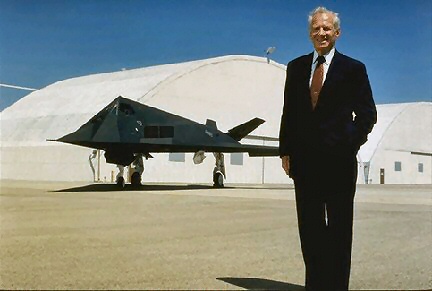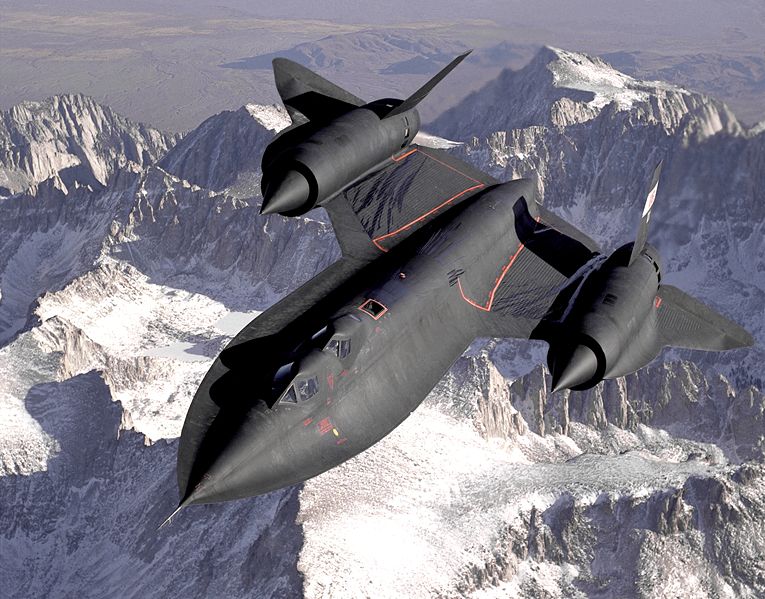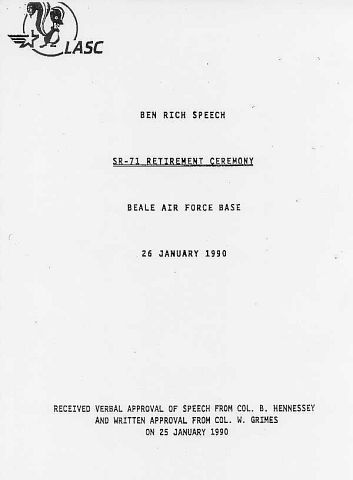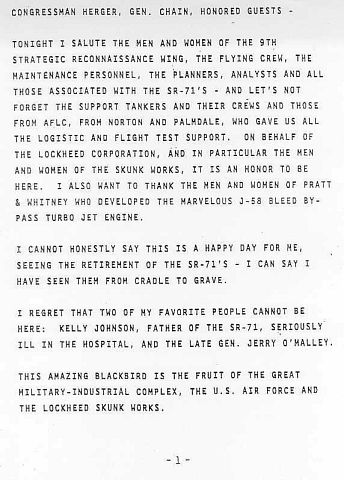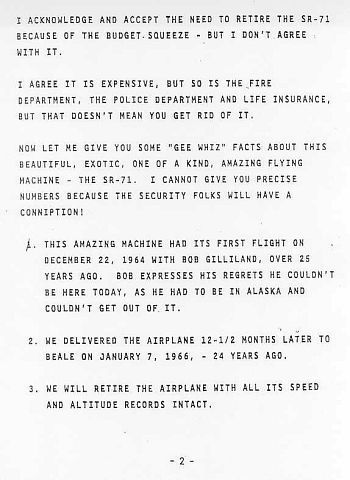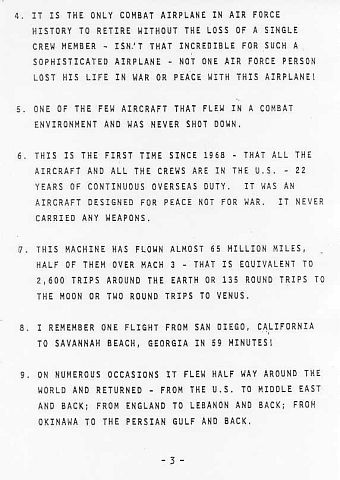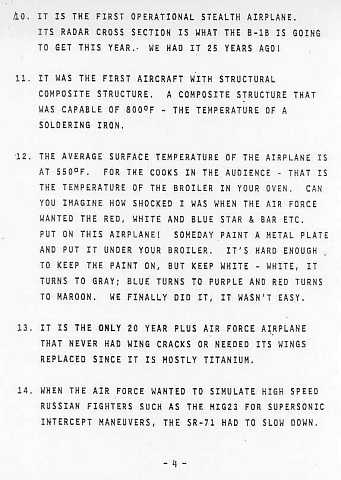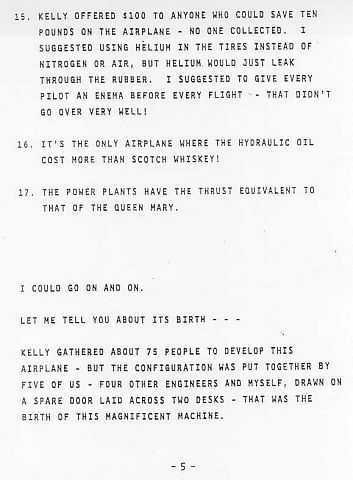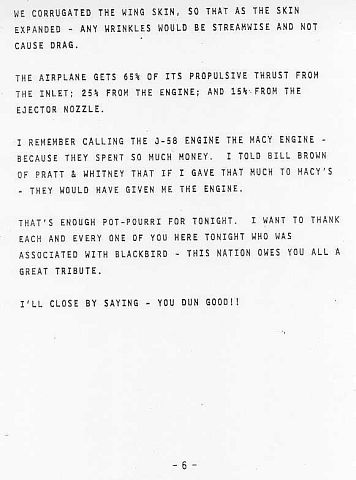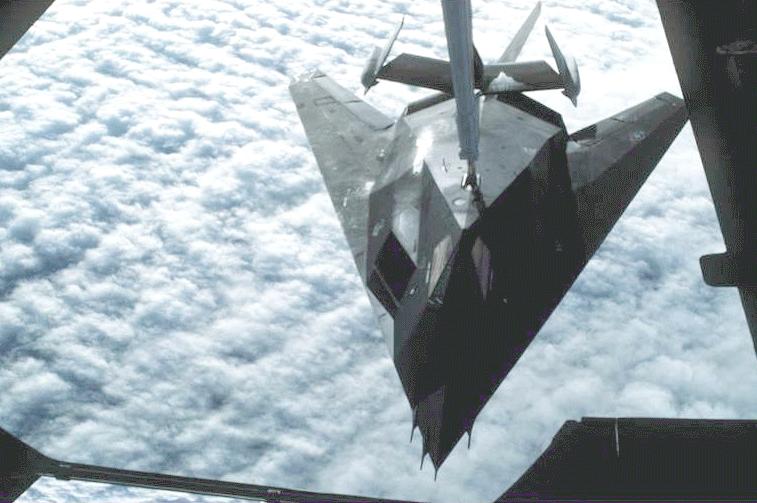|
|
|||||||||
“We already have the means to travel among the stars, but these technologies are locked up in black projects and it would take an act of God to ever get them out to benefit humanity….. anything you can imagine we already know how to do.” - Ben Rich, former Head of the Lockheed Skunk Works Biography: Benjamin R. (Ben) Rich graduated from Berkeley with a degree in mechanical engineering in 1949 at the age of 25. Rich originally wanted to become a doctor. In 1949 Rich decided to get a master's degree from UCLA specializing in both "aeronautical engineering and dating sorority girls." Rich came to Lockheed in 1950 after receiving a degree aeronautical engineering. In December 1954 he was summoned to the Skunk Works by Kelly Johnson as a 29 year old thermodynamicist earning $87 dollars a week. Kelly had requested to borrow from the main plant "a thermodynamicist, preferably a smart one" to solve an unspecified problem. Ben Rich's first assignment with the Skunk Works was the intake on the XF-104 Starfighter. Rich would soon work on the U-2, the A-12, YF-12, Sr-71, and D-21 programs. He joined the SR-71 program in it's initial stages in 1958, and as a thermodynamicist, personally suggested that the Blackbird family of aircraft be painted black to reduce surface temperatures. In 1975 Rich succeeded Johnson as the head of Skunk Works and as a Lockheed vice president in 1977. Rich during this period focused the Skunk Works on the creating the F-117A. In 1977 when the XST made it's first flight, retired Kelly Johnson slapped Rich on the back and yelled "Well, Ben, you got your first airplane." In 1984-86 he served as interm president of Lockheed's Advanced Aeronautical Company, after which he promptly returned to head up Skunk Works once again. In May 1990 when the Skunk Works became a independent company, Ben Rich was named the company's first president and "Chief Skunk." In December 1990 while the first deployment of F-117A's were heading to Saudi Arabia for DESERT SHEILD, Rich retired from Skunk Works. Ben Rich (and the entire F-117A team) won the 1989 Collier Trophy, was a fellow of the American Institute of Aeronautics and Astronautics (AIAA), recieved the American Institute of Aeronautics and Astronautics (AIAA) national aircraft design award in 1972, was selected the 1988 Wright Brothers annual lecturer by both the AIAA and the British Royal Aeronautical Society, and in 1991 was elected an honorary fellow of the AIAA. In 1994, Ben Rich published his memoirs "Skunk Works." On January 5, 1995 Ben Rich died
from cancer at age 69. At his request, his ashes were scattered
from an airplane near his beachfront house on the California coast in Oxnard.
At the moment his ashes were released, a lone F-117A appeared out of the
clouds and dipped its wings in a final salute to its creator
SOURCE: http://www.skunkworks.net/ Excerpt from Dreamland Resort...
"The first is really not a rumor, at least to me, as I know the parties involved, but is strange enough that it should be listed under the category. Not long before his death, Ben Rich, the manager of Lockheed's Skunk Works, was asked a question. He was asked "Hypothetically speaking, if we had possession of extraterrestrial debris or even craft, who would you suppose would be handling it?" To this Rich literally growled, "Los Alamos!" and wouldn't discuss it further. While it could simply be speculation on Rich's part, it hints at an oft-rumored Los Alamos link. And LANL does have some sort of jurisdiction over Area 19." - by Tom Mahood |
|||||||||
|
How the Skunk Works® Got Its Name When Kelly Johnson brought together a hand-picked team of Lockheed engineers and manufacturing people at Burbank in the wartime year of 1943, each team member was cautioned that design and production of the new P-80 Shooting Star jet fighter must be carried out in strict secrecy. No one was to discuss the project outside the small organization, and team members were even warned to be careful how they answered the telephones. A team engineer named Irv Culver was a fan of Al Capp’s newspaper comic strip, "Li’l Abner," in which there was a running joke about a mysterious place deep in the forest called the "Skonk Works." There, a strong beverage was brewed from skunks, old shoes and other strange ingredients. Johnson’s organization operated out of a rented circus tent next to a plastic manufacturing plant that would produce a strong odor which permeated the tent. One day, Culver’s phone rang and he answered it by
saying "Skonk Works, inside man Culver speaking." Fellow employees quickly
adopted the name for their mysterious part of Lockheed, where the new jet
fighter program was brewing. "Skonk Works" became "Skunk Works." The once
informal nickname is now the registered trademark of the company: Skunk
Works®.
http://www.lockheedmartin.com/aeronautics/skunkworks/name.html
|
|||||||||
|
SR-71 Blackbird ..
Ben Rich Speech
|
|||||||||
|
Lockheed F-117A Stealth Fighter ..
Lockheed F-117A Stealth Fighter
|
|||||||||
| Ben Rich: Engineer
From Aviation Hall of Fame Ben Rich was handpicked by Kelly Johnson to be his
replacement for Lockheed’s Advanced Development Project, better known as
Skunk Works, in 1975. Only six months into his tenure, Ben was approached
with an idea to make a stealthy airplane. The diamond-shaped plane had
many nicknames: the hopeless diamond, Rich’s folly, a flying engagement
ring. Kelly Johnson was livid and didn’t think Rich’s first project as
Skunk Works leader would work. So on September 14, 1975 Ben Rich showed
Kelly Johnson the successful electromagnetic chamber results of the F-117
wooden model, Kelly flipped him a quarter and said, “don’t spend it until
you see the damned thing fly.”
Enshrined 2005
On a moonless winter night in January 1991, Operation Desert Storm began over Baghdad with a fearsome new American aircraft that Iraqi radar couldn't see. Members of the 37th Fighter Wing piloted this plane, the Lockeed F-117 Stealth bomber. During that same time and half a world away in Los Angeles, the man known as the “father of the Stealth fighter,” Ben Rich, was being honored at his retirement from Lockeed. He was born in 1925 of British subjects in the Phillipine islands. He traveled extensively with his family until the attack on Pearl Harbor took them to California. Ben built his first airplane – a Piper Cub – at age 14. At first, he considered a medical career, but then decided on civil engineering. Ben received his Bachelor of Science degree from the University of California at Berkeley and his master's degree in the same subject from UCLA. In 1950, Ben joined Lockheed's engineering staff. Post-war was a busy time in aviation. Ben participated in aerodynamic, thermodynamic, propulsion and preliminary design aspects of the F-104, YF12, SR-71, and numerous other sophisticated programs. Lockheed was also involved in commercial aviation. Ben worked on two prototypes of the Constellation, or “Connie,” as she was called. In 1954, Ben's career took an exciting and challenging turn. The legendary Kelly Johnson selected Ben to work for six weeks in the highly secretive world of Lockheed's “Skunk Works.” The team was developing high altitude reconnaissance aircraft, that later would be known as the “U-2”, used during the cold war to gather intelligence over the Soviet Union and eastern bloc nations. What was supposed to be a temporary assignment at Skunk Works became Ben's 36 year career, except for a few assignments outside the secret organization. During the early 1960s, the Skunk Works team was developing the successor to the U-2. Ben worked on the propulsion. Ben was having a heat problem with the new Mach 3 plane and suggested to Kelly that they paint the airplane black to eliminate some of the heat. Kelly at first thought Ben was crazy and told him that he, Kelly, was trying to reduce the plane's weight, not add to it. After Kelly did his own research, he gave Ben the quarter they'd bet and admitted he was wrong. The new aircraft became known as the “Blackbird family” of reconnaissance planes, at that time, the fastest and highest flying jets in the world. Kelly Johnson retired in 1975 and selected Ben Rich to be the new “Chief Skunk.” Ben was in his element heading the organization. As head of Skunk Works, Ben was also it's chief sales person, so he spent a lot of time in Washington, D. C. In 40 years at Lockheed, Ben worked on more than two-dozen aircraft programs, including some that didn't make it and on others that would become famous. In the late 70s, a highly classified program was brewing inside Skunk Works. Ben put together a team that flew two prototypes known by the code name “Have Blue.” This evolved into the world's first operational Stealth aircraft, the F-117 A. When the U.S. Air Force ordered the Stealth fighter into production in the 1980s, Lockheed built a fleet of the aircraft that would be the crown jewel of Ben's career. It was 1988 before the Air Force acknowledged that the F-117 existed. Two years later, the National Aeronautic Association awarded the Collier Trophy to Ben and the Lockheed and Air Force teams that had developed the Stealth. In Operation Desert Storm, the F-117's flew more than 1,270 combat sorties, logged over 6,900 combat hours and dropped more than 2,000 tons of ordinance with pinpoint accuracy. All F-117's and crew members returned safely. Ben's other honors include being selected as the “San Fernando Valley Engineer of the Year” in 1981. He was elected to the National Academy of Engineering in 1989 and was named UCLA's Alumnus Engineer of the Year in 1982. In 1988, Ben was selected as the Wright Brothers Lecturer
for both the AIAA and Royal Aeronautical Society. Ben Rich died in 1995.
His career spanned 40 years as an engineer and executive who became an
international representative and innovator in aviation.
For these achievements, Ben Rich has earned his enshrinement in the National Aviation Hall of Fame |
|||||||||
| FAIR USE NOTICE: This page contains copyrighted material the use of which has not been specifically authorized by the copyright owner. Pegasus Research Consortium distributes this material without profit to those who have expressed a prior interest in receiving the included information for research and educational purposes. We believe this constitutes a fair use of any such copyrighted material as provided for in 17 U.S.C § 107. If you wish to use copyrighted material from this site for purposes of your own that go beyond fair use, you must obtain permission from the copyright owner. | |||||||||
|
|
